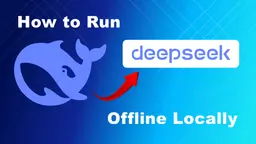What is Molmo AI?
Molmo AI is a groundbreaking open-source multimodal artificial intelligence model developed by the Allen Institute for Artificial Intelligence (Ai2). Launched on September 25, 2024, Molmo stands out for its ability to understand and interact with visual data, making it a powerful tool for a variety of applications ranging from web agents to robotics.
The Molmo family includes models of varying sizes, including the flagship Molmo-72B, which boasts performance comparable to proprietary giants like OpenAI's GPT-4o. One of the key features of Molmo is its ability to "point" at objects in images, allowing for interactive engagement with real-world environments and user interfaces.
Unlike traditional models that rely on massive datasets, Molmo is trained on a carefully curated dataset of just 600,000 images, emphasizing quality over quantity. This efficient approach not only reduces computing costs but also enhances performance. With its open-source nature, Molmo AI democratizes access to advanced AI technology, empowering developers and researchers to create innovative applications without the financial barriers associated with proprietary systems.

Features of Molmo AI
Molmo AI is a groundbreaking open-source multimodal model developed by the Allen Institute for AI (Ai2), designed to process and understand both visual and textual data efficiently. This innovative model combines advanced capabilities with accessibility, enabling developers and researchers to create applications that leverage its robust features without the constraints of proprietary systems.
Key Features of Molmo AI:
- Multimodal Interaction: Molmo AI excels at analyzing and responding to visual data, allowing users to upload images and ask questions. This capability provides contextual understanding, enabling the model to deliver actionable insights based on visual inputs.
- Pointing Functionality: One of Molmo's standout features is its ability to point at perceived objects or UI elements in images. This functionality enhances user interaction, particularly in augmented reality applications, where precise identification of elements is crucial.
- Efficient Data Utilization: Unlike many traditional models that require vast datasets, Molmo is trained on a curated dataset of just 600,000 images. This focused approach ensures high-quality outputs while significantly reducing the computational resources needed for training.
- Open-Source Accessibility: Molmo AI is fully open-source, allowing developers to access its model weights, code, and training data freely. This transparency promotes innovation, fostering a collaborative environment for continuous improvement and adaptation in various fields.
- Model Variants: The Molmo family includes several model sizes, such as Molmo-72B, Molmo-7B-D, and Molmo-1B-e, catering to different computational needs. The flagship Molmo-72B provides performance comparable to proprietary models like GPT-4, showcasing its versatility across applications.
How does Molmo AI work?
Molmo AI, developed by the Allen Institute for AI (Ai2), is an innovative open-source multimodal model designed to understand and interact with visual data. Utilizing a unique training approach, Molmo leverages a curated dataset of 600,000 images, allowing it to perform complex tasks while using significantly less training data compared to proprietary models.
Molmo AI excels in multimodal interaction, enabling users to upload images and ask contextual questions. For instance, it can identify objects, offer dietary options from menus, or analyze charts. A standout feature is its "pointing" capability, which allows the model to highlight specific elements in images, enhancing user interaction by visually indicating answers directly on the content.
With various model sizes—from the powerful Molmo-72B to the lightweight Molmo-1B—developers can integrate Molmo AI into diverse applications, such as web agents, robotics, and augmented reality. This flexibility, combined with its open-source nature, allows industries to harness advanced visual understanding without the barriers often associated with proprietary AI solutions.
Benefits of Molmo AI
Molmo AI, developed by the Allen Institute for AI (Ai2), offers numerous advantages for developers and researchers in the field of artificial intelligence. One of its standout features is its exceptional multimodal interaction capability, allowing it to analyze and respond to visual data effectively. This makes it ideal for applications that require understanding complex images, such as web agents and robotics.
Another significant benefit is Molmo's unique pointing functionality, enabling the model to identify and interact with specific objects or UI elements in images. This capability enhances user experience in augmented reality applications and facilitates more intuitive interactions with digital environments.
Additionally, Molmo AI is available in various model sizes, including a lightweight 1-billion parameter version that can run efficiently on personal devices. This accessibility, coupled with its open-source nature, empowers a broader range of developers to leverage advanced AI capabilities without the need for extensive computational resources.
Overall, Molmo AI represents a significant leap in open-source AI technology, making powerful visual understanding tools accessible to all while fostering innovation in the AI community.
Alternatives to Molmo AI
While Molmo AI offers impressive capabilities, several other open-source multimodal AI models provide similar features:
- CLIP (Contrastive Language–Image Pretraining): Developed by OpenAI, CLIP excels in connecting images and text, enabling tasks like zero-shot classification and image generation.
- Flamingo: Created by DeepMind, Flamingo handles various data types and excels at few-shot learning, making it versatile for different multimodal tasks.
- Mistral: A high-performance language model supporting multimodal inputs, optimized for efficiency while maintaining a large parameter size.
- OpenAI's DALL-E: Known for image generation from text prompts, DALL-E's technology also allows for understanding and interpreting multimodal inputs.
- LAVIS (Language-Vision Pre-training): An open-source framework facilitating the development of language-vision models, supporting tasks like image captioning and visual question answering.
These alternatives offer powerful functionalities and allow for extensive customization, providing developers with a range of options to suit their specific needs.
In conclusion, Molmo AI represents a significant advancement in the field of open-source multimodal AI. Its innovative approach to training, coupled with its versatile features and accessibility, positions it as a formidable tool for developers and researchers alike. As the AI landscape continues to evolve, Molmo AI stands out as a beacon of innovation, democratizing access to advanced visual understanding capabilities and paving the way for new applications across various industries.




